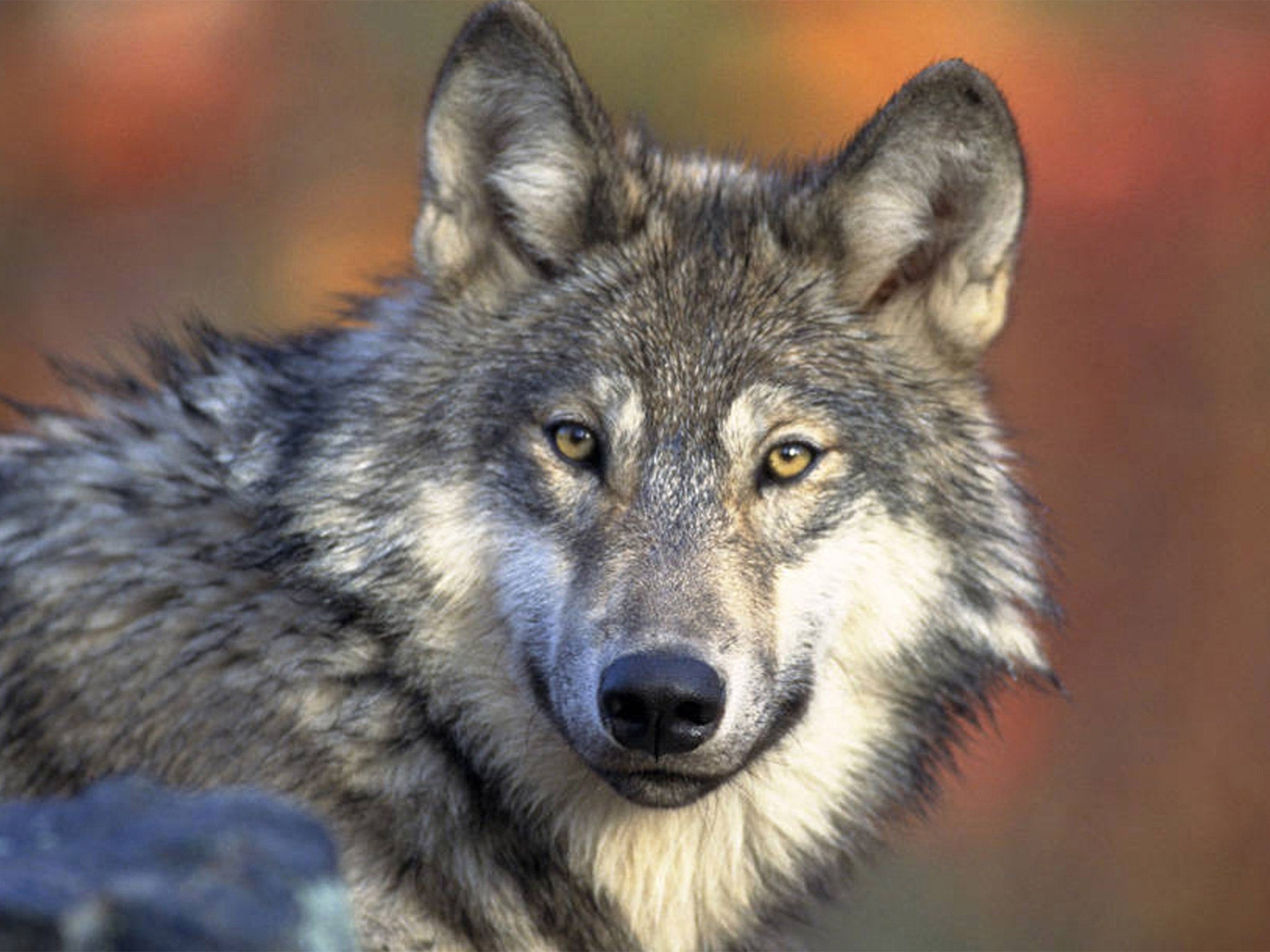‘Rewilding’ would create a theme park, not a return to nature
The quest to fill remoter corners of the landscape with sexy beasts is more Hirst than Attenborough


Your support helps us to tell the story
From reproductive rights to climate change to Big Tech, The Independent is on the ground when the story is developing. Whether it's investigating the financials of Elon Musk's pro-Trump PAC or producing our latest documentary, 'The A Word', which shines a light on the American women fighting for reproductive rights, we know how important it is to parse out the facts from the messaging.
At such a critical moment in US history, we need reporters on the ground. Your donation allows us to keep sending journalists to speak to both sides of the story.
The Independent is trusted by Americans across the entire political spectrum. And unlike many other quality news outlets, we choose not to lock Americans out of our reporting and analysis with paywalls. We believe quality journalism should be available to everyone, paid for by those who can afford it.
Your support makes all the difference.With a stroke of directorial genius, Wes Anderson made Fantastic Mr Fox a narcissistic newspaper columnist when he adapted Roald Dahl’s story into an animated film. “I have this thing where I need everyone to think I’m the greatest, the quote-unquote fantastic Mr Fox,” says the star vulpine hack, smirking with mock-modesty in the voice of (who else?) George Clooney. In this neck of the woods, foxes reliably make headlines, even when – as happened three days ago – the anti-hunting law remains unchanged because the Prime Minister falls into the steel jaws of a trap laid by a canny Scottish keeper.
Thanks to their Clooney-esque charisma as political animals, foxes command attention – and stir controversy – out of all proportion to their numbers. The 2004 ban on hunting with hounds made little difference to “fox abundance”, with estimates hovering around 225,000 to 250,000 for Britain as a whole. When hunts killed without hindrance, they only ever despatched about 5 per cent of adults. Neither does shooting have any great numerical effect. Indeed, the League Against Cruel Sports reports that “when fox territories become vacant, they are taken over by new foxes very rapidly, generally within three to four days”.
Counterintuitively, for those of us who like to see Vulpes vulpes sunning herself at the bottom of the garden or strolling lazily across the high street, not much evidence of an urban boom has surfaced either. More likely, losses from the sarcoptic mange disease have been made up – most visibly, in fox-watching suburbia. But, as Clooney’s Mr Fox might point out in his next piece, statistics are one thing – attitude another.
In Britain, ideas about wildlife always belong to culture as much as nature. Beyond the intensive management of our agricultural land and lowland “forests” over many centuries, even the wildernesses of the Highlands or Wales owe their gaunt grandeur to human hands and minds. Our countryside is a tapestry of historic theme parks, laid out by Anglo-Norman barons, Tudor land enclosers, Georgian aristocrats, Highland sheep lairds, National Trust philanthropists, and so on – right up the subsidy-junkie farmers who have turned oilseed rape into a £600m business and smothered swathes of England in a bilious yellow carpet.
Equally, the creatures that survive, or thrive, in this massively modified landscape serve as proxies for competing visions of class, freedom, order and beauty. In his poem “The Thought Fox”, Ted Hughes finds a vulpine equivalent for the creative act itself. A new idea prowls in the snow “Till, with a sudden sharp hot stink of fox,/ It enters the dark hole of the head”.
Thought-foxes stalk our collective imagination. Even the most feral of British creatures becomes a neighbour, a familiar, a chosen avatar. As the fox divides opinion (with a large majority still in favour of the hunting ban), and two botched badger culls expose policy failures over bovine TB, the role of emotion and projection in these animal passions looks obvious enough. But to write off all this psychological investment as “anthropomorphism”, and dream of some clinical, rational approach to species management, is a forlorn hope. Human feelings about the other life forms we know well have shaped the ecosystem at least since the major domestications that followed the end of the last ice age – the process that the science writer Stephen Budiansky calls “the covenant of the wild”, and considers as an inter-species deal as much as a conquest.
Whatever the other side may want, many humans in urbanised nations now wish to renegotiate that covenant. The call to “rewild” our depleted environment, echoed this week with the launch of the Rewilding Britain campaign, voices a desire for more interesting neighbours within reach. Rewilding has already happened here, of course, by accident more than design. Wild boar, allegedly rampant from Sussex to the Forest of Dean, tramp in their hundreds through the woods like snorting 500lb tanks. Their spread provokes scare stories that show just how flaky and fragile is the hankering for big beasts on our doorstep.
Less contentiously, European beavers have returned to the River Otter in Devon, their disease-free presence ratified by a sort of long-term government visa. Just so long as they don’t claim in-work benefits. In the skies above, raptors continue their spectacular ascent, as red kites, white-tailed eagles, sparrowhawks and the like soar towards safety from near-extinction levels 50 years ago. In 1884, in one of his classic essays about wildlife near London, the countryside writer Richard Jefferies mourned the decline of the otter on “the modern Thames”, that suburbanised river where “the wild red deer can never again come down to drink… in the dusk of the evening as they once did”. By 2011, otters had returned to every English county.
With elegiac fatalism, Jefferies also writes that “I suppose that we shall not see the ospreys again; but I should like to”. In 2001, after re-establishing a talon-hold in Scotland, ospreys hatched eggs in the Lake District for the first time in 150 years. They are still there. On a more modest scale, tourists in Regent’s Park stroll past the throng of ramrod-stiff grey herons by the lake (where about 25 pairs breed on islands) with hardly a second thought. In the 1940s, they might have stopped the traffic.
With help, nature can make the most glorious of comebacks. The rewilders now dream of reinstating lynx, whales, storks, sturgeons and, inevitably, wolves. Query this star-struck preference for charismatic megafauna – or even mega-fish – over less glamorous critters, and they reply that these “top predators” can guarantee the health of the living pyramid beneath them. Anyone for the trickle-down effect?
Meanwhile, sparrows, skylarks and other songbirds have declined by 70 or 80 per cent. For rewilding zealots, the “trophic cascade” initiated by the restoration of elite species may rescue them as well. In the animal beauty contests of the future, size will evidently matter.
Many people would love to have wolves or whales within reach of a weekend trip. Yet rewilders need to recognise that, on an island that everywhere bears deep traces of transformative cultivation and land management, special rules apply. They are proposing a grandiose work of conceptual art rather than a recovery of innocence. The aim of “allowing nature to look after itself” will mean high-intensity policing far beyond anything required by, say, the return of wolves to Yellowstone National Park in 1995.
Closer to home, Rewilding Britain claims that enlightened Continentals treat the species that arouse alarm here as “familiar and rarely controversial”. This is wishful thinking. The 300-odd wolves of France, for instance, trigger one howling row after another among farmers, ecologists and the state. Some farmers even drove sheep to the Eiffel Tower last November to protest against a spate of attacks on their herds.
Resettled lynx or wolves would no more look after themselves than an unmonitored fox population would forsake its taste for chicken. However attractive, the quest to fill the remoter corners of a contemporary landscape with sexy beasts belongs just as much to post-modern culture as to pre-modern ecology: more Damien Hirst, perhaps, than David Attenborough.
In the Netherlands, a sort of Pleistocene zoo showcases this tendency. On 56sq km of reclaimed polder at Oostvaardersplassen, a wildlife reserve has been designed to mimic the conditions of pre-agricultural Europe. It substitutes modern types such as Heck cattle and Konik ponies for species that have gone extinct. In the absence of resident bears or wolves, however, rangers have to shoot the surplus animals, or else they starve to death. Authentic rewilding?
In continents with bigger, emptier spaces, reclamation schemes may aim much higher. It’s somehow apt that, in Brazil, a distinguished artist, the photographer Sebastiao Salgado, has created a flagship rewilding project. On a 7,000-hectare estate of degraded land in Minas Gerais, Salgado and his family have brought back the rainforest by planting two million trees, and overseen the return of 172 bird and 33 mammal species – parrots to pumas.
On this packed island of 65 million humans, no rewilder can ever follow Salgado’s heroic route back to Eden. So if we do crave more A‑list neighbours – mammalian Clooneys, if you like – then that ambition has to come fitted with a frank acceptance of the level of artifice involved. In her new book Adventures in the Anthropocene, Gaia Vince robustly makes the case for honest interventionism rather than fantasies of a reconstituted past. “In the Anthropocene” – the post-Industrial Revolution age of human manipulation of the biosphere – “we are no longer just another part of the natural world, we are the planet’s gardeners, and that requires nurturing skills.”
If, in the future, we can witness not only foxes in Finchley but lynx in Norfolk, wolves in Sutherland and whales in Wales, then their protectors will have to act as vigilant estate managers or even showbiz impresarios. Last month, Hollywood’s dinosaur-cloning franchise reached its fourth episode with Jurassic World. Committed rewilders should think of their blueprints for repopulated territories as an imaginative epic rather than an exercise in eco-nostalgia. Any large-scale retro-reservation in Britain will be a bio-engineered pastiche, not a feat of natural renewal. Do you long to live with a wolf at the door rather than just a fox in the bin? Then welcome to Holocene Park.
Join our commenting forum
Join thought-provoking conversations, follow other Independent readers and see their replies
Comments